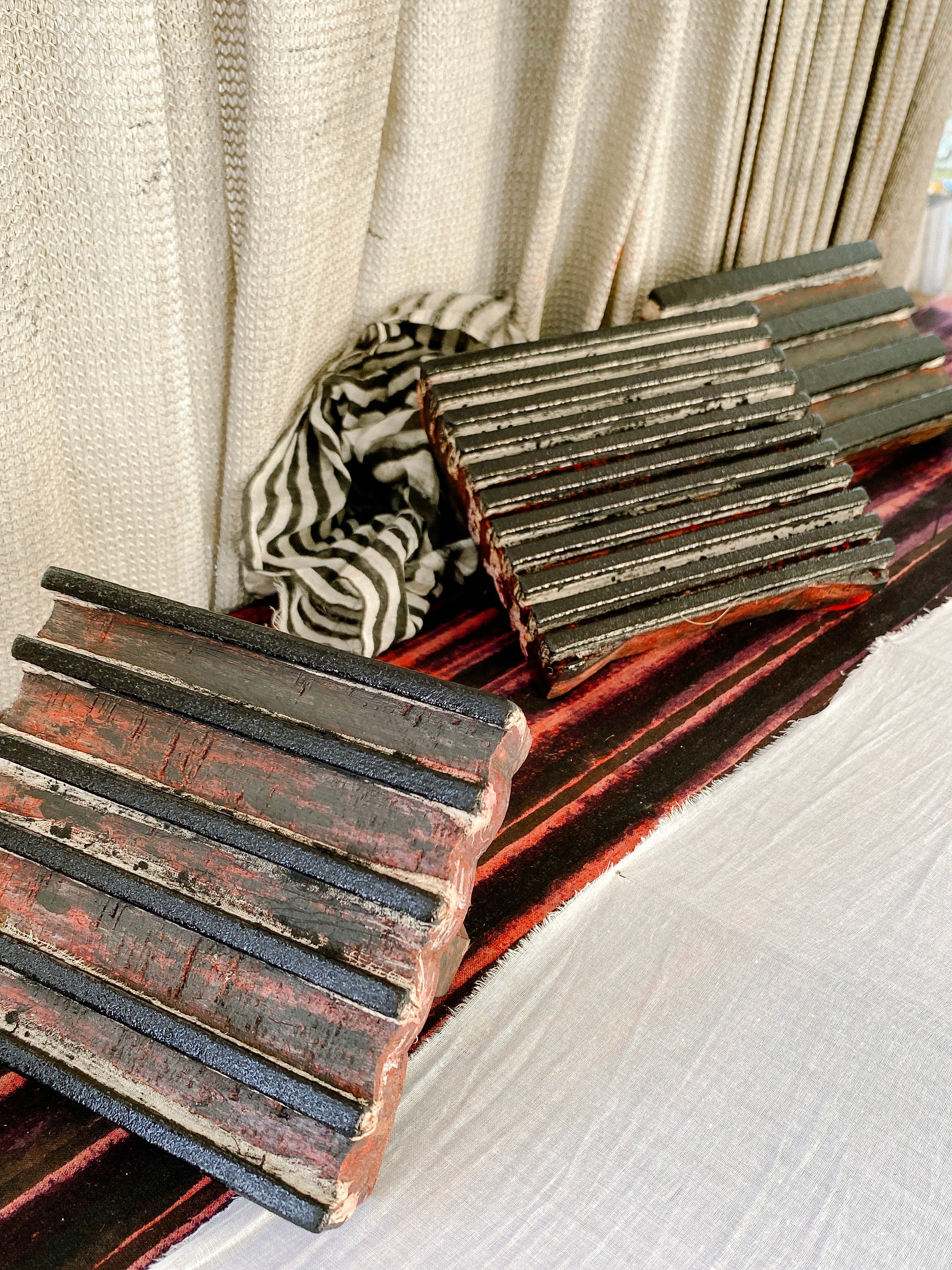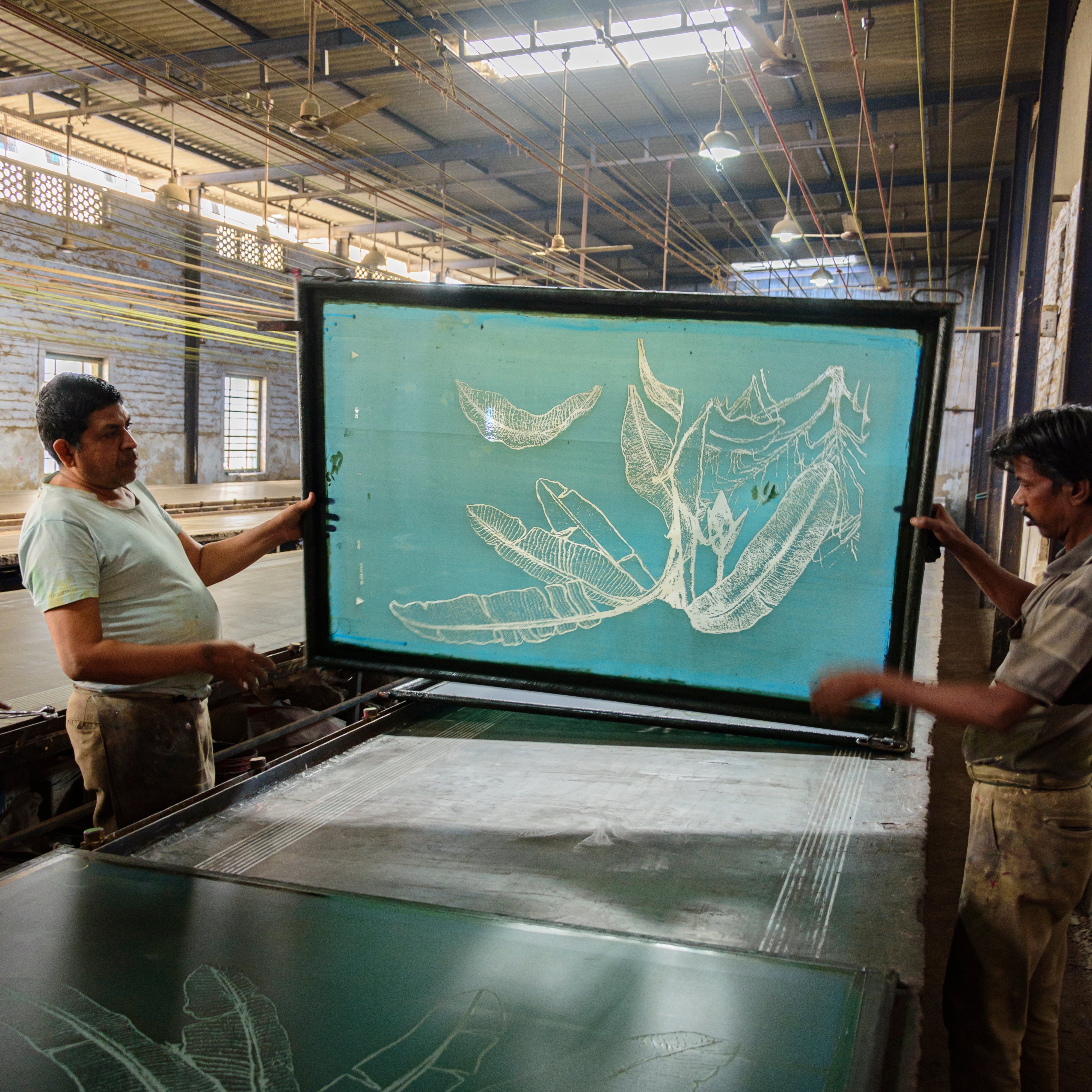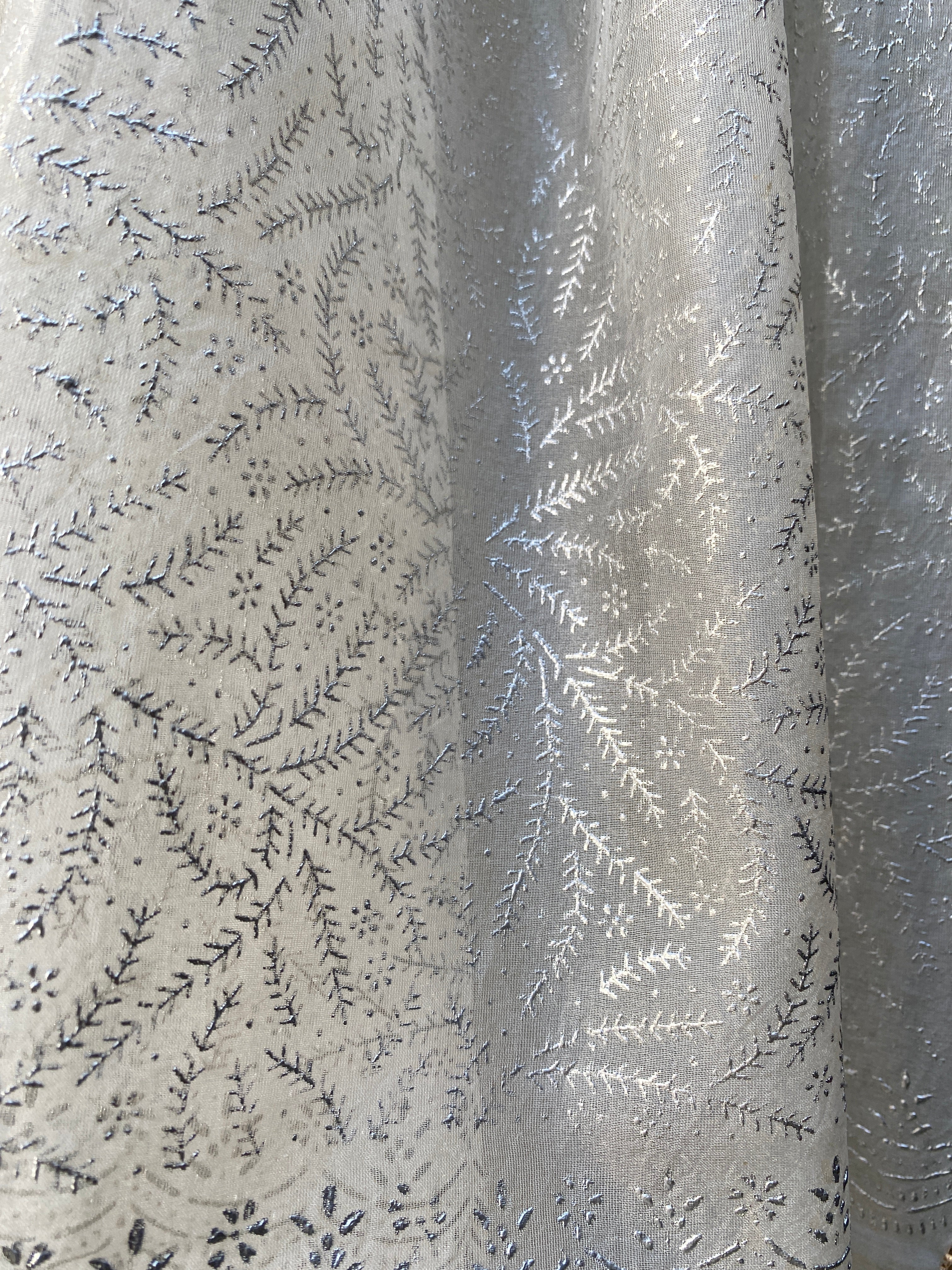
Block Printing
Block printing is the method of patterning cloth or a surface by applying motifs, forms, and cloths with the use of carved and shaped wooden blocks dipped in colour, dye, or pigments.
The tradition of hand-printed textiles, widely practised in the states of Rajasthan and Gujarat in India, is characterised by the use of imprints of geometric patterns as well as stylised floral and animal forms.
Block Making
The block printers in the western region of India hold the wood carvers of Pethapur in very high esteem due to their expertise in intricate carving patterns, registration marks, colour separations of the designs, air vents at the back of the block, and intricate relief carving.
The saag wood used for the block is seasoned and prepared, while a chalk-like paste is applied to the upper surface and allowed to dry. The patterns traced on the wood can be based on geometric forms or comprise of motifs derived from leaves, flowers, fruits, figures of animals, gods and goddesses. The negative space is then carved out with special-purpose chisels made by the craftsman humself. The pattern is then raised in deep relief by further scooping out the negative areas with the aid of a hand drill.
The karigars were originally of the Suthar or carpenter caste and they made furniture, doors, windows, as well as blocks for printing.


Block Printing
The fabric for block printing is prepared by washing it beforehand, thereby making it softer and more absorbant for the dye. The dye is prepared on the day of the printing.
Before printing, the craftsman marks the fabric with chalk for him to know the spacing for the print.
He then dips the block in the dye, places it firmly on the cloth, and presses it down. Sometimes the block is hit from the top to ensure a clean print. He then repeats the pattern to cover the length of the fabric.
In the image below, Tarachandji has used three different blocks to create a pattern of varying depth and thickness. He has to ensure the lines match perfectly to create a clear and consistent pattern. There are minor variations, of course, where the pattern would not line up perfectly: this is considered a feature of a hand block printed textile, not a mistake. These imperfections lend a degree of uniqueness and personality to the final product.





Leave a comment
This site is protected by hCaptcha and the hCaptcha Privacy Policy and Terms of Service apply.